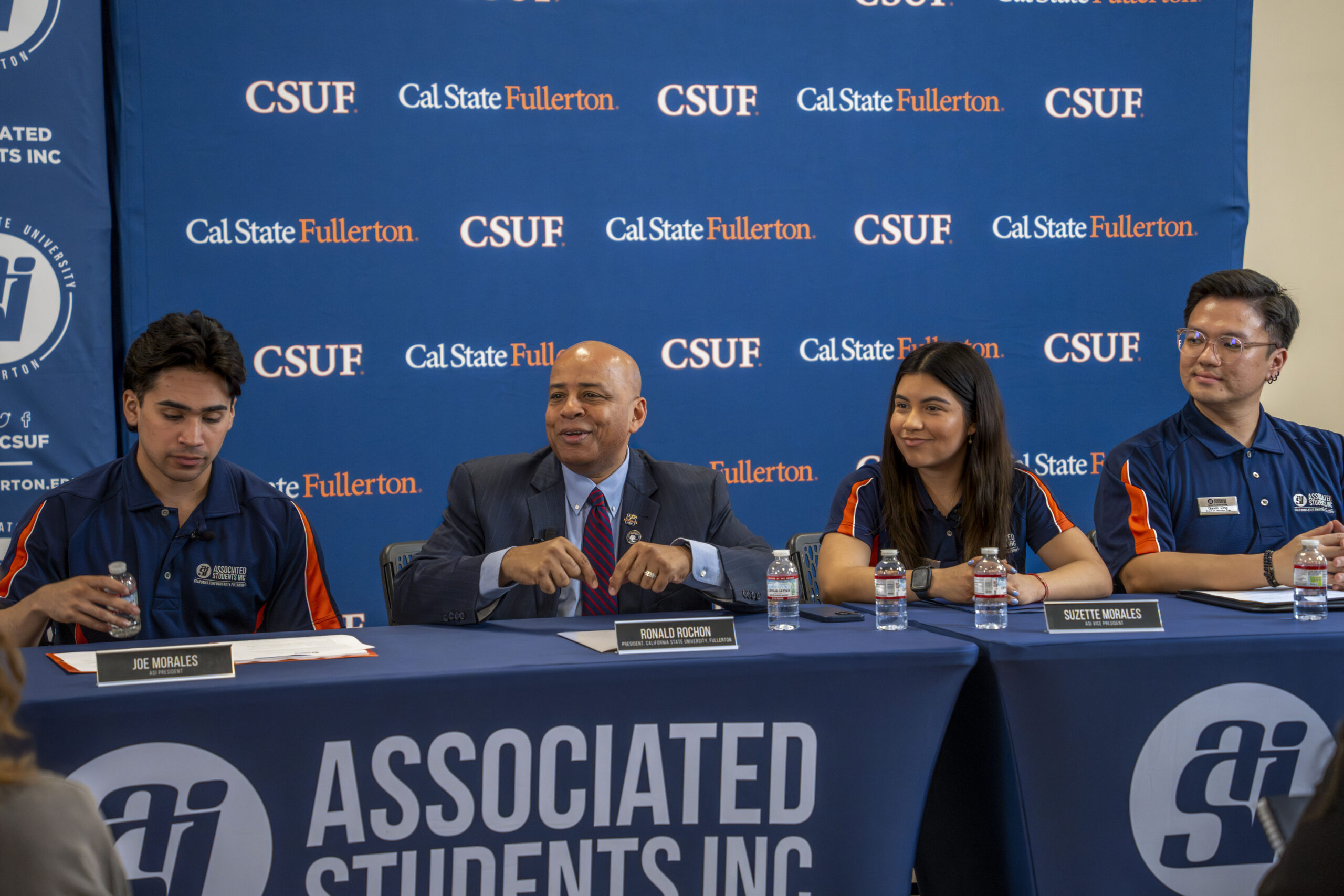
28 Mar Wellness Initiative Takes Flight: A Collaborative Victory for Students
After a nearly three-year process, Associated Students Inc. Student Wellness Initiative (ASWI) was approved by Cal State Fullerton’s President Ronald Rochon.
The ASWI is a comprehensive initiative designed to support students in all aspects of wellness, recognizing that well-being is multidimensional and essential for success. With input from over 14,000 students over two years, the initiative will result in $105k more for scholarships, $100k more for student clubs and organizations and a concert in the fall to bring Titans together.
In a collaborative press conference on March 11, campus and ASI leaders announced ASWI’s next steps and what this means for the Titans of today and tomorrow.
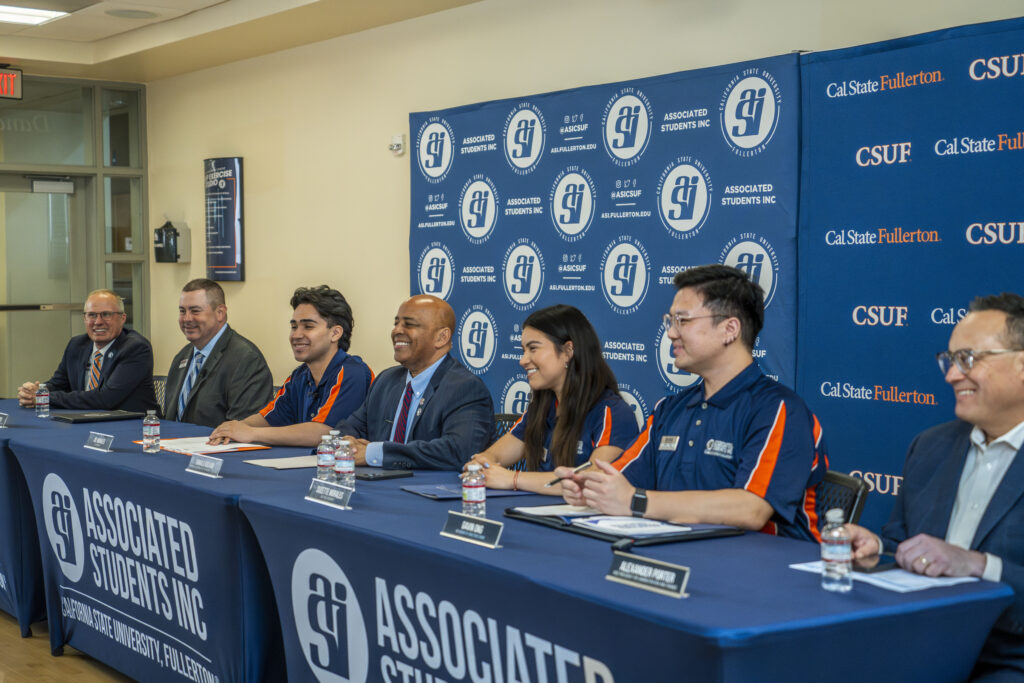
The press conference included a panel of seasoned campus leaders who all took part in the development of ASWI. / Credit: ASI Marketing, Communications & Design
“The Wellness Initiative has been approved. We are moving forward with this beautiful idea,” Rochon said. “These [ASI student leaders] along with their peers have gone through three iterations. Three iterations with three different student presidents pushing forward this initiative. …” “Over my career I’ve seen colleagues much older than these young folks quit. But our students didn’t do that. They found a way to maintain their eye on the prize and the success of the student body.”
Sitting with Rochon on the panel were campus leaders who in some way took part in the development of ASWI, including, ASI President Joe Morales, ASI Vice President Suzette Morales, ASI Board of Directors Chair Gavin Ong , ASI Executive Director Dave Edwards, CSUF Vice President of Student Affairs Dr. David Forgues and CSUF Vice President of Administration and Finance Alex Porter.
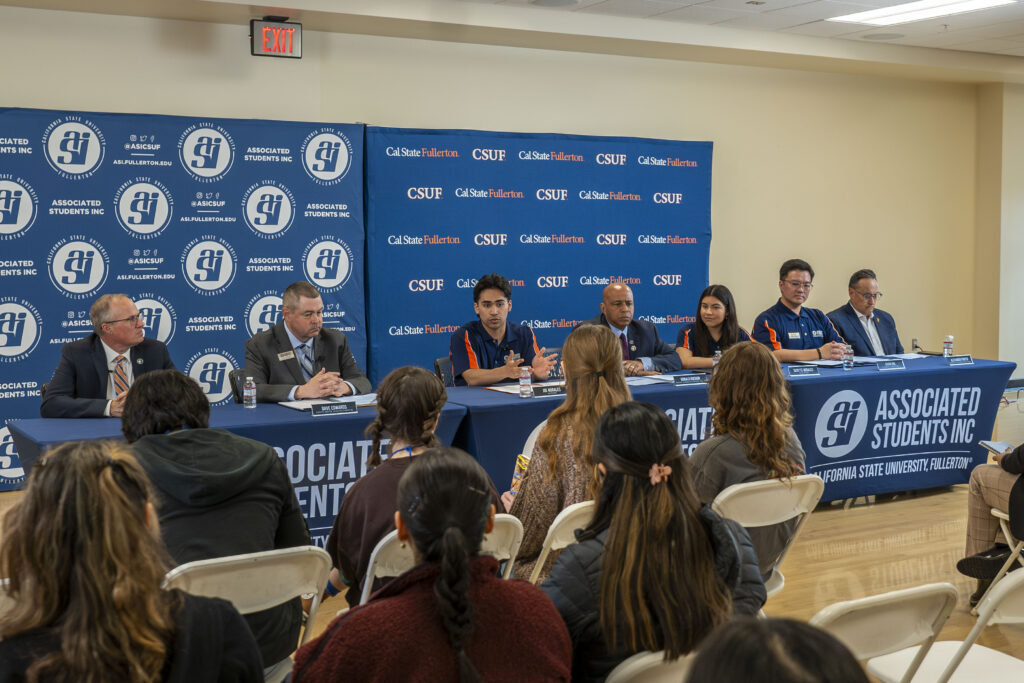
ASI President Joe Morales answering questions about the Initiative. / Credit: ASI Marketing, Communications & Design
“It would be irresponsible to not commend the previous student leaders who not only laid this path for us but came up with this idea and went out of their way to engage students to see what issues are the most important,” Joe Morales said. “We are going to transform student lives. We’re going to give them opportunities that they’ve never had before. We’re going to expand opportunities that are already presented to students.”
The press conference concluded with an in-depth Q&A session where students raised their questions for this initiative going forward.
Questions & Answers
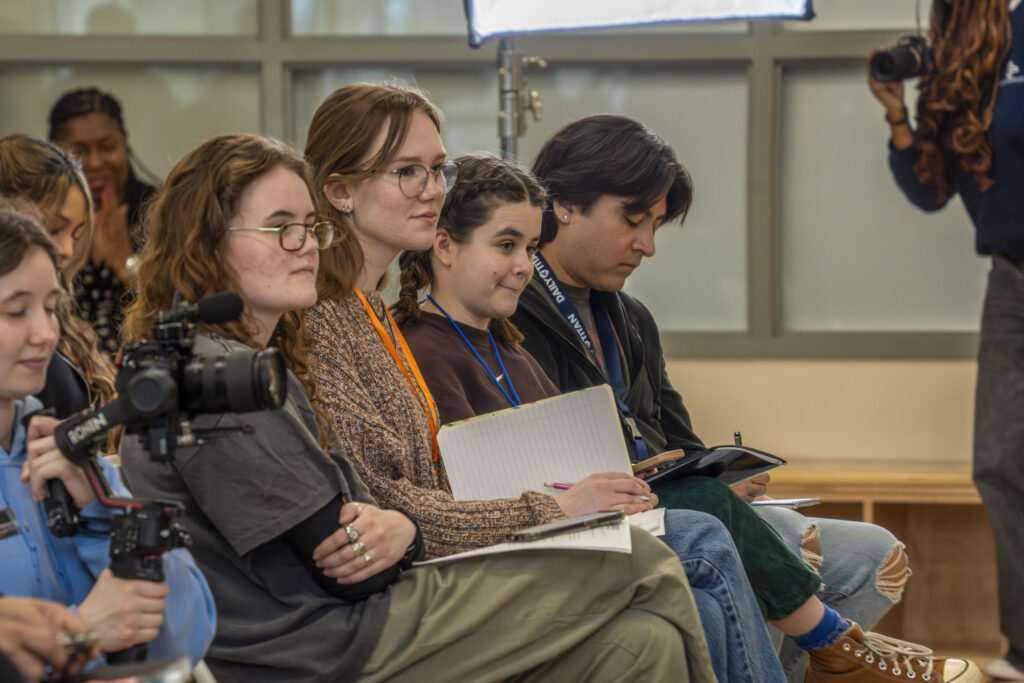
Members of CSUF’s Daily Titan listened to Initiative updates and posed questions to the panel. / Credit: ASI Marketing, Communications & Design
Q: With the Wellness plan already created, how will students be involved in this process?
“This is an initiative and it’s everything we’ve envisioned. We want to continue giving students the opportunity to build on this foundation,” said Joe Morales. “As student leaders, we want to make sure that we are keeping constant communication and allowing there to best student engagement and evolvement with seeing this whole process through.”
Q: What does this [plan] look like on a structural level?
“Part of this initiative involves expanding the Student Rec Center to create new opportunities for fitness and wellness,” said Edwards. “The details of whether this is more workout space, intramural space or more dance studio space are still to be worked out with next year’s student leaders as we develop the concrete plans. This goes the same for the Titan Student Union and the new Wellness Center.”
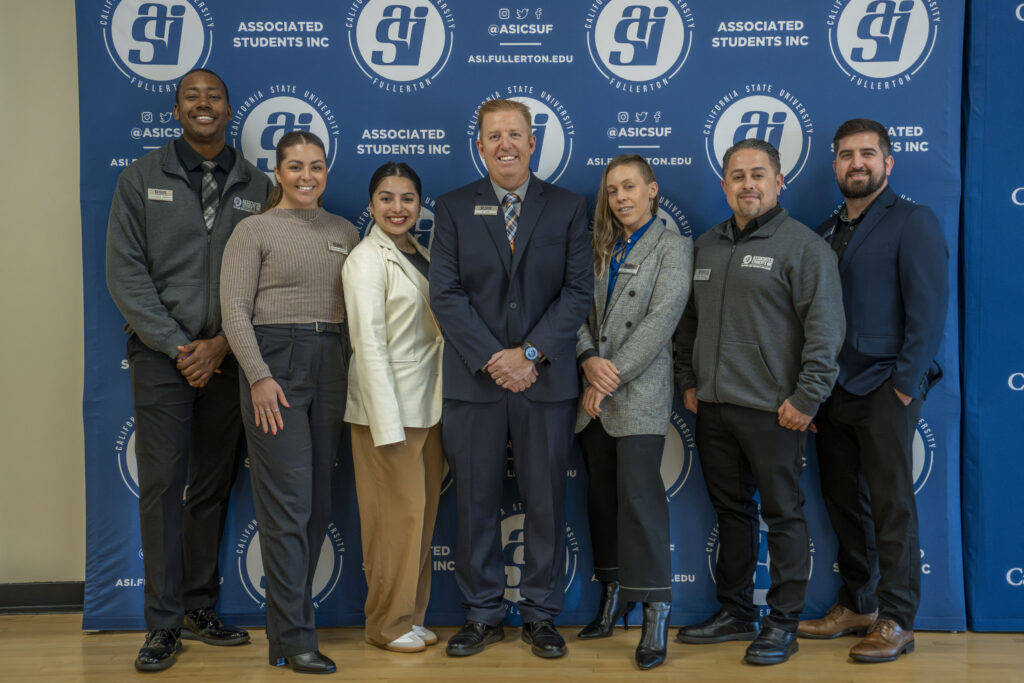
Student Recreation Center staff are some of the many who will be impacted by the Initiative. / Credit: ASI Marketing, Communications & Design
Q: Why is ASI raising student fees on top of tuition fees?
“For the [SRC] we’re standing in right now, our predecessors and student leaders had to go through the same difficult situation. It’s difficult to tell students that we will be raising their fees,” Suzette Morales said. “But if it weren’t for their decision-making and providing more for future students, we wouldn’t be here today. We wouldn’t have the SRC or the TSU. We wouldn’t have them if students hadn’t made the difficult decisions for future Titans, for us. This is something we had to do in the moment for our future Titans.”
“We were purposeful to go and get the alternative consultation,” Edwards said. “We tried to reach out to as many students as we could just to make sure that they were still in agreement and the overwhelming consensus was ‘yes.’ They see the benefit of this initiative, they agree with it and they would like to see it come to fruition.”
Q: How did ASI ensure a wide variety of students voice were included?
“We reached out to every single campus partner we could,” said Ong. “We went out with presentations; we pushed out surveys, we did group studies, and those numbers were a lot.”
“What’s remarkable about this process is that there have been three student leaders before them. There is a process to this, and most campuses will accomplish this in a semester or a year,” said Forges. “We’ve really been proud to have three successors who have taken this on, who have done the initial consultations, that have really fleshed out probably one of the most well thought-out, best-developed initiatives.”
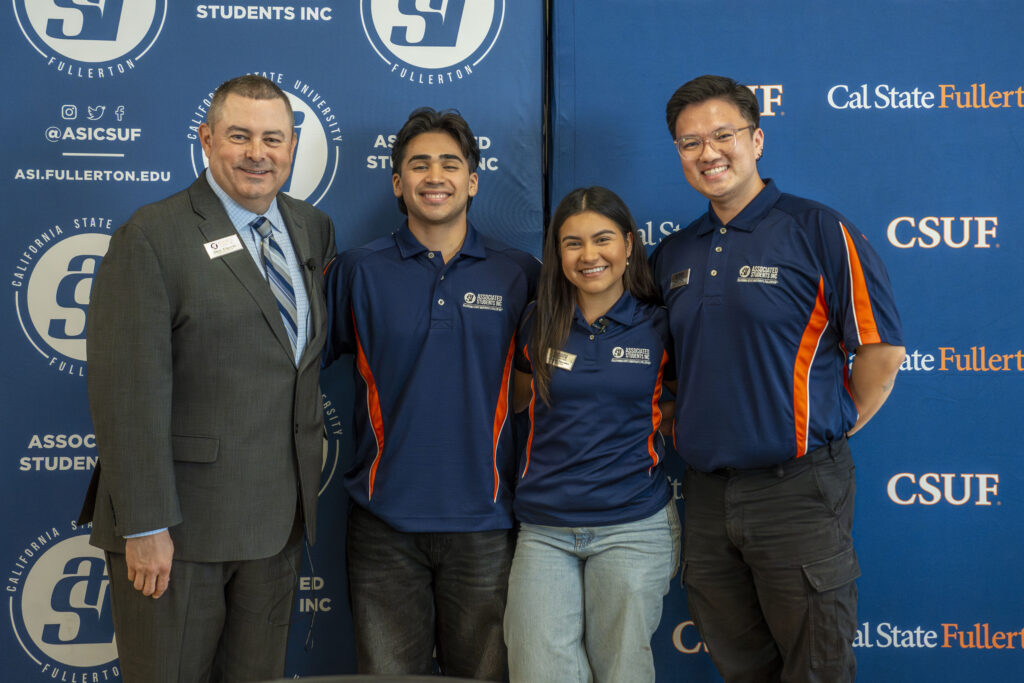
Dr. David Edwards standing alongside student leaders Joe Morales (left),Suzette Morales (middle) and Gavin Ong (right) / Credit: ASI Marketing, Communications & Design
Q: What was the point of an alternative consultation?
“The alternative consultation is different than a referendum. A referendum would’ve just gone through a vote where students really wouldn’t have an input. Through the alternative consultation, we were able to directly hear from students what they wanted the ASWI to be. We did not one, but two,” said Suzette Morales. “We brought it to the student board as well as the Student Fee Advisory Committee. We’ve shared it, we made it open and transparent as possible for students to engage and hear about what it was, how they want it to be and how to make it happen.
Q: Was the fact that CSUF is known to be a commuter campus play a role in the decision-making process?
“This is one of the biggest reasons why we came to be so passionate about this. The TSU is essentially the hub of our campus.” said Joe Morales. “Personally, I see so many students sleeping in the alumni room. So now we have to ask ourselves: What do we do? Okay, let’s get nap pods, let’s get a Wellness Center, let’s find solutions to these issues that we’re seeing with our own eyes on campus.”
“The initial alternative consultation process which took place in fall of 2022, that set up the framework, was based on a lot of feedback from students that came from a representative group based on our demographic,” Edwards said. “The group of students that responded to our campus population demographically, whether they were commuters, residential, first-year or fourth-year, involved in clubs or not, all represented our larger student population.”
“If students are paying increased fees, let’s give it back to them,” said Joe Morales. “Let’s give them more programs so they could get engaged, so they don’t have to just come and leave…We want to make this (ASWI) an alternative, so students don’t want to leave our campus.”
“We want to make sure that every student, residential or not, feels valued, that they matter and they can engage their campus fully,” Rochon said.
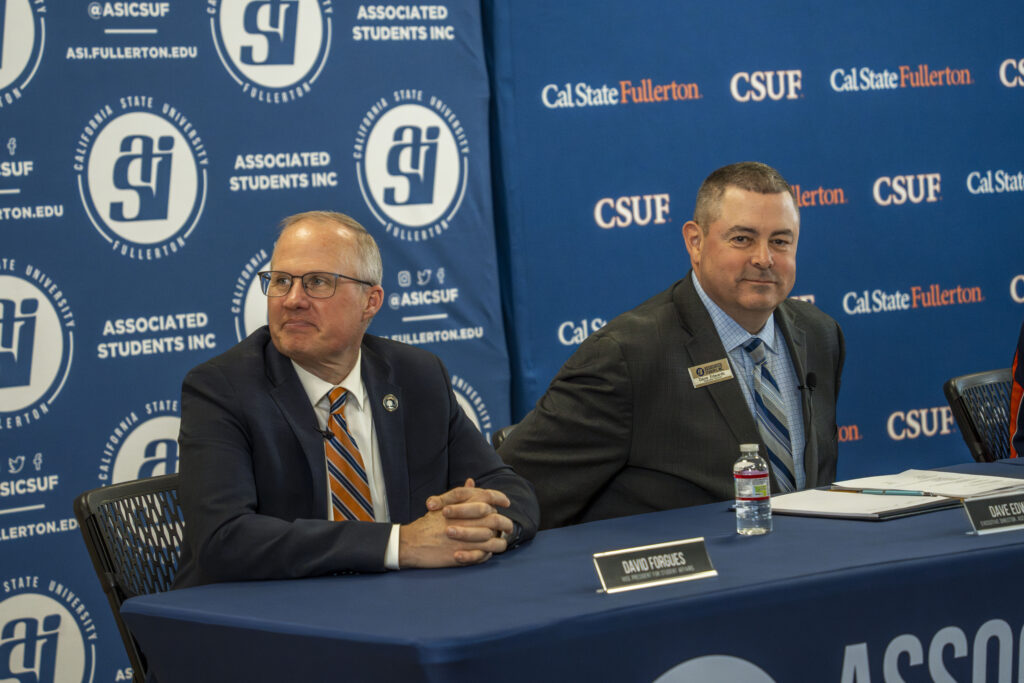
Dr. David Forgues and Dr. Dave Edwards listen intently to student questions. / Credit: ASI Marketing, Communications & Design
Q: What’s next for the Wellness Initiative?
“[We will be] continuing outreach. We’re going to go into the planning stages, where students can get involved,” Ong said. “We welcome all students to come to our board and committee meetings to give that direct input and do more outreach.”
“A couple years of planning and you’ll begin to see construction taking place in the TSU, Rec Center and wherever the new Wellness Center will be,” Edwards said.
Q: How will this initiative contribute to career-readiness for students?
“We’re focusing on the eight dimensions of wellness,” said Suzette Morales. “Physical, Financial, Spiritual and more…which are all aspects of career readiness. When you go out into the world after college, you need to have an understanding of yourselves holistically.”
“We’re estimating an increase of 50-75 new student employee positions, and then some independent contractors like massage therapists to come on campus and offer their services,” Edwards said.
“This is not just an ASI Student Wellness Initiative but will be moving across campus where we’re getting other colleges to collaborate with and bring in their resources,” said Suzette Morales. “Whether this is more internship opportunities, workshops or research. This is going to be a huge collaboration that goes beyond just the physical of wellness.”
A Future to Look Forward To
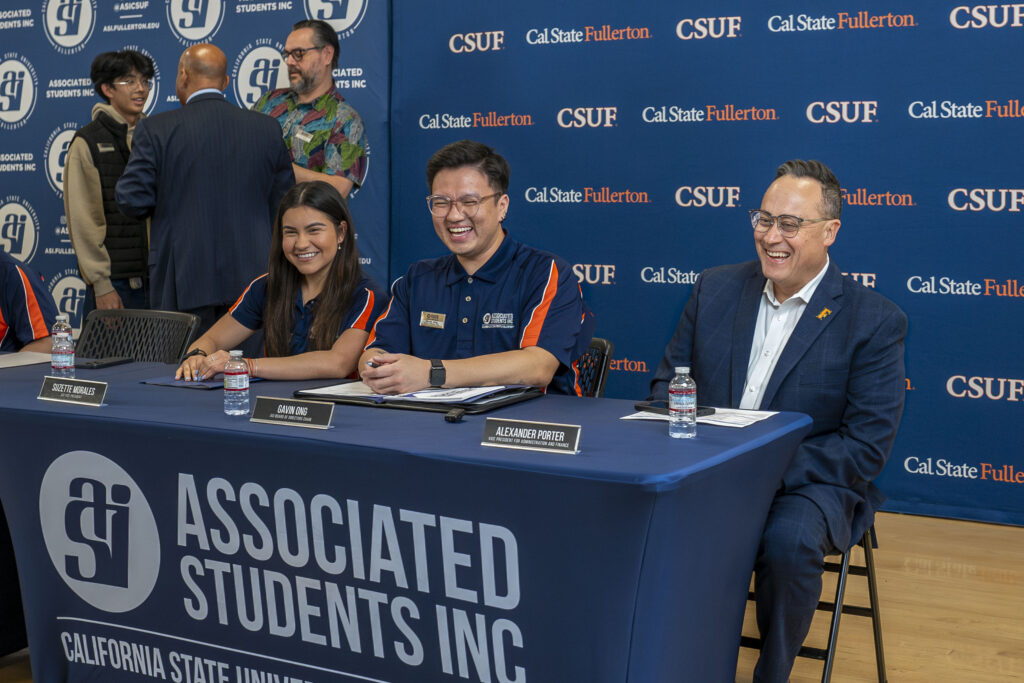
The initiative will result in major changes for the university that will directly impact campus life. / Credit: ASI Marketing, Communications & Design
As the press conference came to a close, ASI and campus leaders look forward to a time when student wellness is at the forefront of campus culture.
“When you have people who are selfless in their actions, who are speaking about the beauty and wellbeing of others, magic will happen,” Rochon said. “It may happen slowly, but I firmly believe it will happen. That’s what occurred here.”
For more updates regarding ASI’s Student Wellness Initiative, visit the ASI website.
